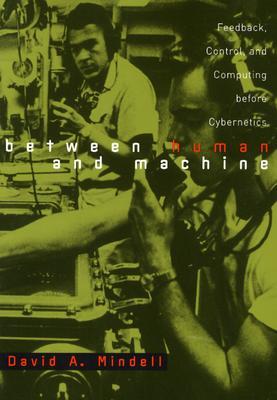Charlotte Hess, Elinor Ostrom (eds.): Understanding Knowledge as a Commons: From Theory to Practice (2006)
Filed under book | Tags: · archive, collaboration, commons, democracy, economics, education, fair use, floss, free software, governance, intellectual property, knowledge, library, networks, open access, participation, patents, property rights, public domain, publishing, research, scholarship, technology

“Knowledge in digital form offers unprecedented access to information through the Internet but at the same time is subject to ever-greater restrictions through intellectual property legislation, overpatenting, licensing, overpricing, and lack of preservation. Looking at knowledge as a commons—as a shared resource—allows us to understand both its limitless possibilities and what threatens it. In Understanding Knowledge as a Commons, experts from a range of disciplines discuss the knowledge commons in the digital era—how to conceptualize it, protect it, and build it.
Contributors consider the concept of the commons historically and offer an analytical framework for understanding knowledge as a shared social-ecological system. They look at ways to guard against enclosure of the knowledge commons, considering, among other topics, the role of research libraries, the advantages of making scholarly material available outside the academy, and the problem of disappearing Web pages. They discuss the role of intellectual property in a new knowledge commons, the open access movement (including possible funding models for scholarly publications), the development of associational commons, the application of a free/open source framework to scientific knowledge, and the effect on scholarly communication of collaborative communities within academia, and offer a case study of EconPort, an open access, open source digital library for students and researchers in microeconomics. The essays clarify critical issues that arise within these new types of commons—and offer guideposts for future theory and practice.”
Contributors: David Bollier, James Boyle, James C. Cox, Shubha Ghosh, Charlotte Hess, Nancy Kranich, Peter Levine, Wendy Pradt Lougee, Elinor Ostrom, Charles Schweik, Peter Suber, J. Todd Swarthout, Donald Waters
Publisher MIT Press, 2006
ISBN 0262083574, 9780262083577
367 pages
PDF, PDF (updated on 2013-5-14)
Comment (0)David A. Mindell: Between Human and Machine: Feedback, Control, and Computing before Cybernetics (2002)
Filed under book | Tags: · computing, cybernetics, engineering, history of computing, history of technology, industry, information theory, machine, military, networks, noise, science, technology, telephone

Today, we associate the relationship between feedback, control, and computing with Norbert Wiener’s 1948 formulation of cybernetics. But the theoretical and practical foundations for cybernetics, control engineering, and digital computing were laid earlier, between the two world wars. In Between Human and Machine: Feedback, Control, and Computing before Cybernetics, David A. Mindell shows how the modern sciences of systems emerged from disparate engineering cultures and their convergence during World War II.
Mindell examines four different arenas of control systems research in the United States between the world wars: naval fire control, the Sperry Gyroscope Company, the Bell Telephone Laboratories, and Vannevar Bush’s laboratory at MIT. Each of these institutional sites had unique technical problems, organizational imperatives, and working environments, and each fostered a distinct engineering culture. Each also developed technologies to represent the world in a machine.
At the beginning of World War II, President Roosevelt established the National Defense Research Committee, one division of which was devoted to control systems. Mindell shows how the NDRC brought together representatives from the four pre-war engineering cultures, and how its projects synthesized conceptions of control, communications, and computing. By the time Wiener articulated his vision, these ideas were already suffusing through engineering. They would profoundly influence the digital world.
As a new way to conceptualize the history of computing, this book will be of great interest to historians of science, technology, and culture, as well as computer scientists and theorists.
Publisher Johns Hopkins University Press, 2002
ISBN 0801868955, 9780801868955
439 pages
Mindell’s lecture about the book at MIT (video, 78 min, 2002)
Review (Larry Owens, History of Science and Technology)
Download (removed on 2014-9-18 upon request of the author)
Comment (1)Roy Ascott: Telematic Embrace: Visionary Theories of Art, Technology, and Consciousness (2003)
Filed under book | Tags: · art, conceptual art, consciousness, cyberspace, electronic art, networks, technology, telematics, telepresence

Long before e-mail and the Internet permeated society, Roy Ascott, a pioneering British artist and theorist, coined the term “telematic art” to describe the use of online computer networks as an artistic medium. In Telematic Embrace Edward A. Shanken gathers, for the first time, an impressive compilation of more than three decades of Ascott’s philosophies on aesthetics, interactivity, and the sense of self and community in the telematic world of cyberspace. This book explores Ascott’s ideas on how networked communication has shaped behavior and consciousness within and beyond the realm of what is conventionally defined as art.
Telematics, a powerful marriage of computers and telecommunication, made technologies we now take for granted—such as e-mail and automated teller machines (ATMs)—part of our daily life, and made art a more interactive form of expression. Telematic art challenges traditional relationships between artist, artwork, and audience by allowing nonlocal audiences to influence the emergent qualities of the artwork, which consists of the ebb and flow of electronic information. These essays constitute a unique archaeology of ideas, tracing Ascott’s meditations on the formation of consciousness through the intertwined cultural histories of art and technology from the 1960s to the present.
Shanken’s introduction situates Ascott’s work within a history of ideas in art, technology, and philosophy. Given the increasing role of the Internet and the World Wide Web in the creation of commerce and community at the dawn of this new millennium, scholars, students, laypeople, policymakers, and artists will find this collection informative and thought-provoking.
Edited and with an essay by Edward A. Shanken
Published by University of California Press, 2003
ISBN 0585465916, 9780585465913
427 pages
PDF (updated on 2012-7-24)
Comment (0)
